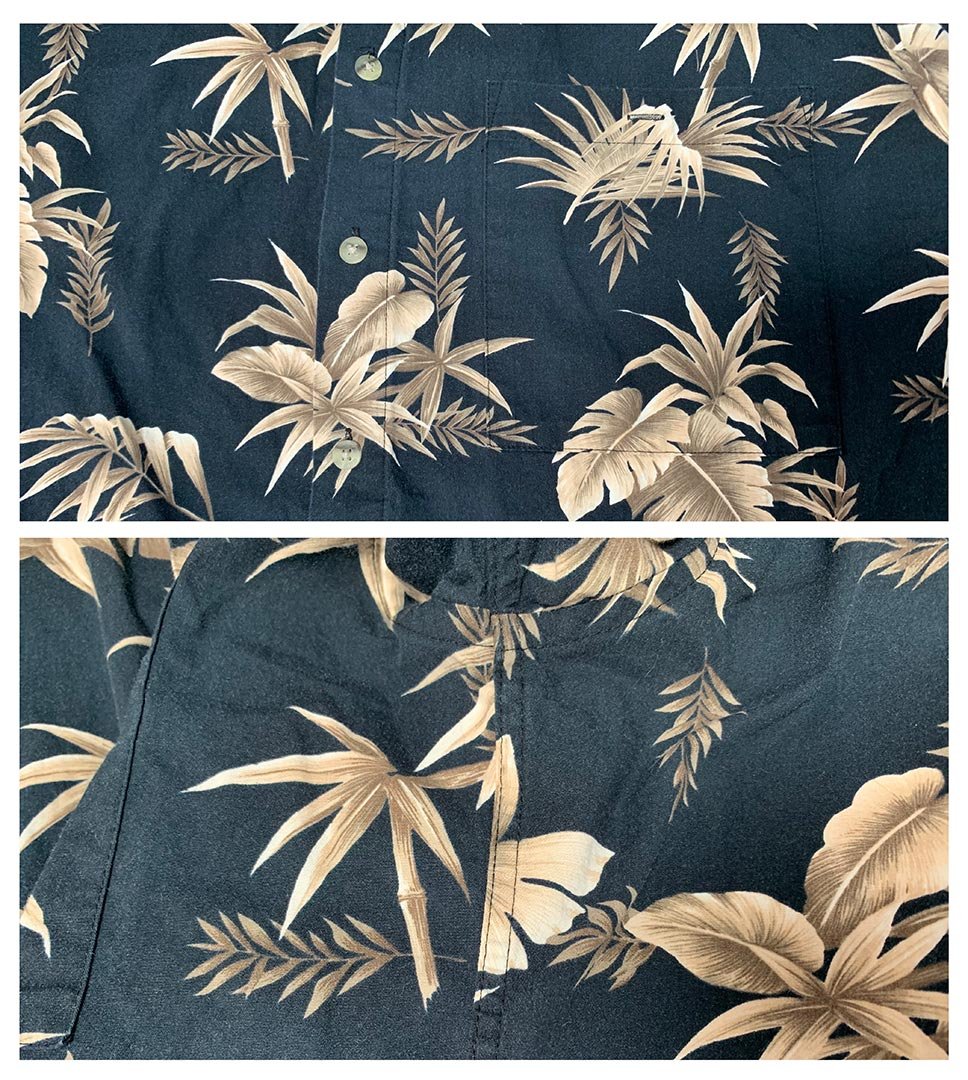What Beginner Editors Can Learn From Aloha Shirts
How do you make a game trailer look as high quality as possible when you don't have years of editing experience?
Focus on just a few prominent details.
Before diving into the editing, I need to talk a little bit about aloha shirts (which you may know of as Hawaiian shirts). I first learned the history of aloha shirts from this episode of Articles of Interest. One thing I learned was a sign of a quality aloha shirt is its front pocket.
In a well made aloha shirt, the front pocket is cut out of fabric which PRECISELY aligns with the pattern; this makes the front of the shirt look seamless. The shirt makers for more premium shirts put in the extra work to find the precise section of the pattern to match. Whereas a shirt maker who doesn't care as much or doesn't have the time, will just cut the pocket out of any part of the pattern and sew it on.
Also, in a well made aloha shirt, the pattern is often seamless in front when the two sides are buttoned together. It's something which might go unnoticed (especially depending on the pattern) but it's a nice sign of attention to detail. Now, it's physically impossible for the pattern to be completely seamless for the entire shirt. If you look at the side of the shirt under the armpits where the front and back pieces connect, the pattern will inevitably be interrupted.
But you know what? No one's really looking at the sides. They're mostly looking at the back (which is one piece) and the front which can be made seamless with some attention to detail. So it's okay the sides aren't perfect!
On the top, the pattern for the pocket and the mid section of the shirt perfectly aligns!
On the bottom below the armpits the patterns don't match at all, but that's ok because it's not what people will be looking at most of the time.
So how does this pertain to trailer editing? Well, if you're an inexperienced editor, try to do the same and focus on just a few key details. My suggestions are:
Matching cuts or actions to the beat of the music.
Good eye trace
The first is pretty straightforward. Put the beginning of each shot on a prominent beat in the music or find something within a shot which is very snappy like a character hitting an enemy, and sync THAT to one of the music beats. Putting cuts directly on the beat can actually get monotonous when the audience begins to expect it, but it's a good place to start.
Eye trace is a bit more advanced editing concept, but it's when the position of the subject at the end of a shot matches the position of the subject at the beginning of the next. This means the audience is always looking where you want them to be, and the viewing experience is much smoother. I have a more in-depth post about eye trace here which includes a short tutorial for how to do this easily in your software.
I think a little editorial intention creates a HUGE gulf between an amateur trailer and a decent one. I will give a trailer more credit if I can see editorial intent, because if I see the editor cared enough to pay attention to a few small details, I'm more inclined to reciprocate by watching. The Final Fantasy VII Remake Intergrade trailer I shared from this post is a great example of a trailer where I have difficulty seeing any editorial intent. The only intention I can see in that trailer is: "Cut a bunch of cool shots and put it over music" which is pretty much the bare minimum for making a trailer. They're not even cutting on the beat!
Editing is said to be best when it's invisible, but it's kind of the opposite when it comes to trailer editing, which can be very flashy and in-your-face. When feature films and TV shows do stuff like cutting on the beat or matching actions to the beat it's usually the exception (like with the film Baby Driver). If anything, it's more distracting when trailer editing ISN'T assertive and attention grabbing, because it comes with the territory.
So, find your trailer's proverbial aloha shirt pockets when you're editing. What is a detail you can show some love to which will make people see you as the editor asserting your influence? Again, the bar is pretty low. Like the aloha shirt, just match up some visuals or sounds which would never have matched up had you not just put in a little bit more effort. Editing is all about matching things up, two visuals cut together, picture to sound, sound to music, and more.
If you want some more ways to elevate your editing past the amateur level, I wrote these posts on the baseline of quality it takes to separate yourself from most amateurs, and how to get to an intermediate level.

